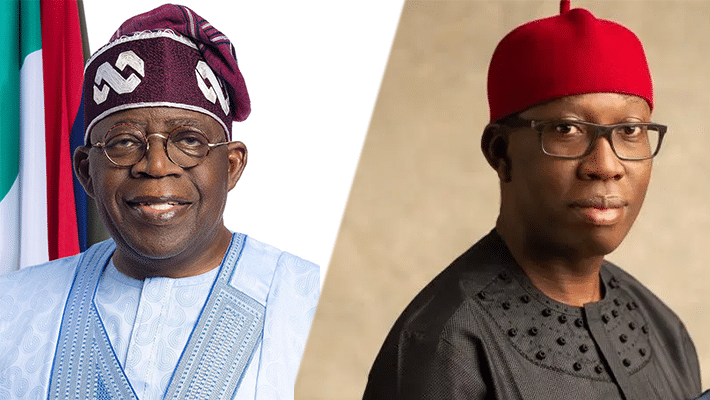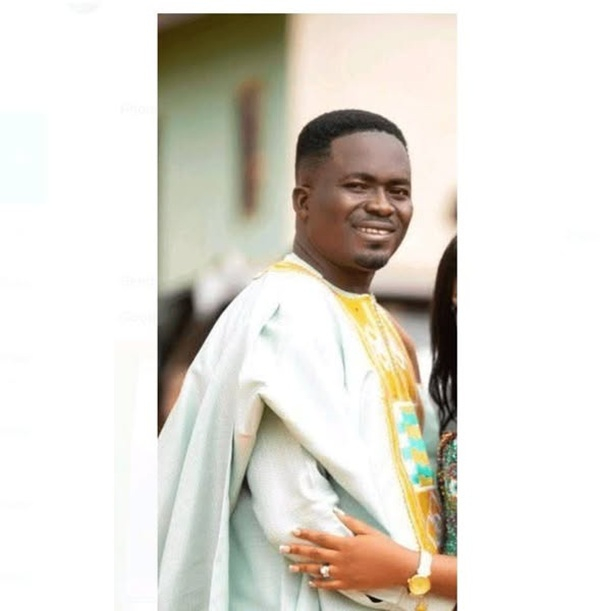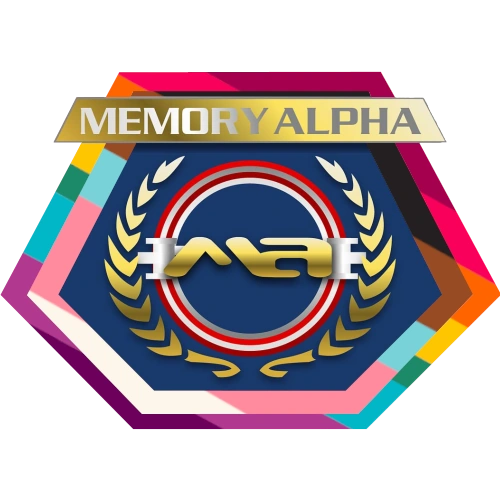Review: Applied Linguistics: Alharthi (2025)
21-Feb-2025
Ahmad A. Alharthi <aaalharthiksu.edu.sa>
Applied Linguistics: Alharthi (2025)
E-mail this message to a friend
Book announced at https://linguistlist.org/issues/35-2498
Title: English for Academic Purposes
Subtitle: Perspectives on the Past, Present and Future
Series Title: New Perspectives on Language and Education
Publication Year: 2024
Publisher: Multilingual Matters
http://www.multilingual-matters.com/
Book URL: https://www.multilingual-matters.com/page/detail/?K=9781800414471
Author(s): Douglas E. Bell
Reviewer: Ahmad A. Alharthi
SUMMARY
Douglas Bell’s book titled English for Academic Purposes: Perspectives on the Past, Present and Future is a welcome addition to the field of English for Academic Purposes (EAP) in general particularly in the context of the United Kingdom , where the author is from. Together with his article (Bell, 2018), this work represents an important text to outsiders of those two contexts. The book in question, which is originally based on the author’s doctoral thesis, stays true to its title, taking a historical approach that outlines issues that the field has grappled with in the past, are still disputed at the present time, or are likely to arise in the near future. Besides the short preface at the beginning, where the author explains his motive for writing the book (to chart a history that outlines the theoretical basis of the field) and his expected audience (both prospective and experienced EAP practitioners), the text consists of eight chapters, followed by a long and thorough list of references from which the author draws his discussions. Each chapter starts with a brief introduction explaining its goal and closes with a short summary highlighting the main points discussed in the chapter, followed by a list of “points for further discussion and critical reflection.”
In Chapter 1, “EAP’s Birth and Early Historical Development,” the author makes a case for the importance of examining EAP through a historical lens, because this approach can help us discover a shared knowledge base which the field is generally lacking (p. 2). Arguing for a historical approach to improve the broad field of writing studies is in keeping with several other works (e.g., Matsuda, 2001; Ruecker & Shapiro, 2021; Shapiro, 2022) discussing writing instruction and making the point that history can be a powerful tool in helping us better engage with contemporary issues and predict future developments. Bell notes that EAP can be traced back to English for Specific purpose (ESP)—and its earlier manifestation, English for Science and Technology (EST)—which, in turn, can be traced back to English for General Purposes (EGP) or mainstream English Language Teaching (ELT). This point is important to bear in mind as the history of EAP requires by necessity a discussion of ESP, since the latter represents the earliest beginning of the former (p. 5). The chapter then discusses factors that led to the emergence of EAP as a field: some of which are political (e.g., English becoming the language of science and technology post-World War II), while others are socio-economic (e.g., the rise of the number of international students desiring to learn English for personal goals and professional purposes).
Chapter 2, “Core Issue and Debates 1960-1999,” discusses the real beginning of EAP, with the 1960s being the departure point in the discussion. The chapter is divided into two main sub-headings: the first covering the decade of 1960-1970; the second covering the decade of 1980-1990. Under the first sub-heading, the author discusses such topics as register analysis, rhetorical analysis/discourse analysis, needs analysis, and the notion of authenticity. Under the second sub-heading, the author critically engages in ten core debates in the field, including, for example, genre analysis and the binary of so-called accommodationist EAP and critical EAP. While there is certainly some accuracy to this chronology (register analysis, for example, was so limited as to view language as a system, thus paying attention only to individual language forms, whereas rhetorical analysis is considered an improvement, viewing language as a communication tool), the author is quick to caution against the tendency to view history as merely a linear progression. More accurately, history is as much “recursive” as it is progressive (p. 43), and some of the core topics in the field (e.g., needs analysis and genre analysis) continue to have some currency even as we speak. In fact, in the following chapter, the author again discusses developments in both needs analysis (p. 55) and genre analysis (p. 56).
Chapter 3, “Core Issues and Debates 2000-2004,” spans the period from the beginning of the new millennium to the present time and explores a total of thirteen major themes and topics in the field. Some themes (e.g., genre analysis) recur from previous chapters. Others (e.g., EAP practitioners and the privatization of EAP) are discussed in this chapter for the first time, but are discussed again in, respectively, Chapter 4 and Chapter 8. Other themes discussed in the chapter include critical thinking, contrastive/intercultural rhetoric, academic word lists, academic literacies, and the concept of communities of practice, to name only a few. Various aspects of each theme are highlighted, e.g., the theme’s sub-types, as well as its limitations and the charges of its critics. Critical thinking, for example, can be viewed either as a pedagogical issue that relates more to teachers or as a learning issue that relates more to students. The author closes the chapter by reminding us again that history is cyclical rather than linear. More importantly, he acknowledges the overlap and crossover between some of the themes discussed in the chapter and the fact that his selection of those themes is necessarily subjective and undeniably impressionistic.
In Chapter 4, “The EAP Practitioner,” the author looks closely at the term “EAP practitioner,” making the point that while it is fairly common in the EAP community, it does not really feature in job advertisements and descriptions. Other terms, including “teacher,” instructor,” and “tutor,” are usually used instead. The author holds that while the term “practitioner” implies the “practice of applied knowledge” (p. 66), it suggests more than the mere act of teaching, and has more positive connotations than an “administrator” or “manager.” A practitioner, according to the author, is someone occupying a third space between a teacher and a researcher or—in the author’s words— “someone who is able to do both; someone who can extend knowledge and apply it wisely to practice” (p. 66). The chapter then begins a discussion on the differences between EAP and mainstream ELT, the clearest of which has to do with content. For example, while in ELT students might learn how to write a letter to a friend, in EAP they will learn how to write an academic essay (p 73). The difference in content entails a host of other differences, including different competencies of teachers, different expectations of learners, different knowledge base, and different classroom pedagogy (p. 75). When highlighting those differences, the author is quick to disclaim any intention of making an “expression of elitism” of one side over the other (p. 72).
Chapter 5, “Approaches to EAP Pedagogy,” continues the discussion of the differences between EAP and ELT. Bell argues, for example, that while the knowledge base of ELT practitioners draws on English grammar, phonology, and lexis (p. 85), that of EAP practitioners’ requires an understanding of rhetorical conventions and an awareness of discourse. The author attributes this difference to the streams of research that influenced each side. According to him, EAP is informed by various subjects but primarily five subject areas: Systematic Functional Linguistics (SFL), genre theory, corpus linguistics, academic literacies, and critical EAP. Of these, the author continues, only corpus linguistics had some influence on ELT (p. 87). Related to the point about knowledge base, the chapter then explains the background of the issuing of the Contemporary Framework for Teachers of English for Academic Purposes, published by the British Association of Lecturers in English for Academic Purposes (BALEAP) (BALEAP, 2008). This framework, which was the result of a working group of which the author was a member, consists of four broad categories (Academic practice, EAP students, Curriculum development, and Programme implementation), each containing two to four competencies expected of EAP practitioners. Other highlights of this chapter include the distinction between pre-service EAP teaching and in-service EAP teaching, with the latter having higher entry requirements than the former, and its students having generally a better grasp of EAP.
The first part of Chapter 6, “EAP Materials and EAP Assessment,” explores the issue of EAP materials design. Here, we can contrast “commercial” materials with “custom-made” (or “in-house” materials). The author notes that the latter, although they have the obvious disadvantage of requiring a significant amount of time, also have a few advantages. For example, the process of materials creation can be a form of professional development; and the materials can give teachers more agency in their work, create collaborative opportunities between EAP teachers and subject specialists, and finally gain institutional recognition. The discussion in this section includes both EAP writing and listening materials, and the issue of material authenticity is invoked again here, and is contrasted with the element of pedagogical appropriacy to the level of the students. The author holds that, while important, the former can sometimes be mistakenly emphasized at the expense of the latter. The second part of the chapter examines the issue of assessment. One dimension of assessment is concerned with students. Here, the author lists TOEFL (Test of English as a Foreign Language), IELTS (International English Language Testing System), and PTE (Pearson Test of English) as the three most widely accepted exams for academic purposes, and continues to discuss the major criticisms voiced against IELTS in particular. Another dimension of assessment is concerned with EAP teachers themselves. Here, the author talks about three possible forms: student evaluations, classroom observations, and reflective practice. The author maintains that given the different focus of ELT versus EAP (where the former, by comparison, pays more attention to student affect), classroom observations in EAP contexts should have different criteria from that in ELT contexts.
Chapter 7, “The Role and Status of EAP in the Academy,” surveys three different theoretical frameworks before drawing out their implications for EAP as a field of study. The first framework concerns the work of British sociologist Tony Becher and his concept of “academic tribe.” The second framework concerns the work of British sociologist Basil Bernstein and his three concepts of “classification,” “framing,” and “pedagogic code.” And the third framework concerns the work of French sociologist Pierre Bourdieu and his notions of “habitus,” “field,” and “capital.” The author explains these frameworks succinctly but clearly before examining EAP through their lenses. As an example, the notion of academic tribe classifies knowledge structures and academic disciplines into four types: “hard pure” (e.g., sciences), “soft pure” (e.g., humanities), “hard applied” (e.g., technologies), and “soft applied” (e.g., applied social sciences). Without providing an answer, the author poses the question of whether EAP should be considered soft pure (like modern languages) or soft applied (like applied linguistics), positing that pondering questions of the sort will have “important consideration(s) for longer term academic survival and prosperity” (p. 128). Using the other two frameworks, the author concludes that EAP has a “weak classification,” “weak framing,” “integrated [i.e., weak] code” (p. 130), undefined habitus, and lower capital. He, therefore, closes the chapter by outlining four essential recommendations that could help improve the status of EAP. One of these, for example, is for the EAP practitioner to engage in more peer-reviewed publication and scholarly activities (p. 140).
In Chapter 8, “Strengths, Weaknesses, Opportunities, and Threats: Is EAP Facing a Bright or an Uncertain Future?”, the author explores various points that relate to the possible future of EAP. In four separate sections, those points are phrased in the form of strengths, weaknesses, opportunities, and threats, to illustrate the broader point that either a bright or uncertain future of EAP is possible, depending on what members of the EAP community choose to do from this point forward. For example, while the discipline has come of age and is now well-established in the academy (strength), it still suffers from a wide gap between research and practice (weakness). Similarly, while EAP represents a multi-billion-dollar industry (strength), the profession is characterized by “poor upward career mobility” (p. 146). As for opportunities, these include, among others, the possibility of broadening the student target population beyond university settings, given the increase interest in academic literacy skills in schools, as well as the possibility of utilizing the knowledge and expertise of EAP professionals beyond EAP contexts, such as in the introduction of the PGCHE (Postgraduate Certificate in Higher Education) qualification in British universities. Finally, some of the threats include neoliberal attitudes towards higher education with their effect on the privatization of EAP, as well as the new developments in artificial intelligence.
EVALUATION
For a field that has a long and rich history, Bell’s text is very accessible, thoroughly enjoyable and concisely written, with lucid explanations throughout and with well-balanced discussions of issues that are highly disputed in the field. Its strength lies in its comprehensive coverage of the topic and in the fact that it combines the author’s personal reflections on his long experience in the field with the perspectives of scholars that he interviewed. I find myself in agreement with much of the book’s central theses. That said, a few of the minor issues that stood out to me include the following:
In the discussion of the term “EAP practitioner” in Chapter 4, I wonder if the term “pracademic”—which is a professional identity performing as a “broker” between a practitioner and academic (Posner, 2009)— could have anything to add to the discussion. I doubt it would be adopted in official titles and job announcements, but I still feel that it can capture more than the term “practitioner,” given that the latter applies to both EAP teachers and EAP administrators alike.
In Chapter 5 I feel that the discussion on the knowledge base of ELT (p. 85) could have been improved slightly by engaging with the critical side of applied linguistics (Pennycook, 2001). The reality is that critical applied linguistics, which has a great deal in common with critical EAP, has now attained a “mainstream status” in language studies (Kubota & Miller, 2017, p. 1) and is likely to be a core component of a master’s degree program in Teaching English to Speakers of Other Languages (TESOL).
Similarly, the field of second language writing (SLW) receives only a passing mention on page 87; this is rather curious given the fact the two fields have strong ties in the long history EAP, have various similarities, and can easily learn from each other. In fact, Tony Silva, writing in 1990, argues that SLW instruction can be classified into four major approaches: controlled/guided composition; current-traditional rhetoric; the process approach; and EAP (Silva, 1990). Finally, Chapter 5 also includes a minor typo (“Chapter 5” for “Chapter 6” on p. 90.)
But despite these secondary shortcomings, the book remains a valuable addition to EAP and can serve as a great introductory text to newcomers to the field. At various points in the book, the author laments the fact that there is generally a lack of EAP-specific qualifications, calling for a change of the status quo. I second the author’s call, and if I ever find myself teaching in such a specialized program, I would without hesitation assign his book as a core reference.
REFERENCES
BALEAP (2008). Competency framework for teachers of English for academic purposes. Retrieved December 17, 2024, from https://www.baleap.org/wp-content/uploads/2016/04/teap-competency-framework.pdf
Bell, D.E. (2018). The practice of EAP in Australia: A rose by any other name? In Wong, L.T., & Wong, W.L.H. (Eds.), Teaching and learning English for academic purposes: Current research and practice (pp. 161-177). Nova Science Publishers.
Kubota, R., & Miller, E. R. (2017). Re-examining and re-envisioning criticality in language studies: Theories and praxis. Critical Inquiry in Language Studies 14, 129-157.
Matsuda, P. K. (2001). Reexamining audiolingualism: On the genesis of reading and writing in L2 studies. In Belcher, D., & Hirvela, A. (Eds.), Linking literacies: Perspectives on second language reading/writing connections (pp. 84-105). University of Michigan Press.
Pennycook, A. (2001). Critical applied linguistics: A critical introduction. Lawrence Erlbaum.
Posner, P. L. (2009). The pracademic: An agenda for re-engaging practitioners and academics. Public Budgeting and Finance, 29(1), 12-26.
Ruecker, T., & Shapiro, S. (2021). Critical pragmatism as a middle ground in discussions of linguistic diversity. In Silva, T., & Wang, Z. (Eds.), Reconciling translingualism and second language writing (pp. 139-149). Routledge.
Shapiro, S. (2022). Cultivating critical language awareness in the writing classroom. Routledge.
Silva, T. (1990). Second language composition instruction: Developments, issues, and directions in ESL. In Kroll, B. (Ed.), Second language writing: Research insights for the classroom (pp. 11-23). Cambridge University Press.
ABOUT THE REVIEWER
Ahmad A. Alharthi is an assistant professor in the Department of English at King Saud University, Saudi Arabia. He holds a master’s degree in TESOL and a PhD in English Language and Rhetoric from the University of Washington, Seattle. His work has appeared in edited volumes by IGI Global, Multilingual Matters, Routledge, and Brill. His research interests include critical applied linguistics, second language writing, and English as a lingua franca.












